If your car has been showing you trouble codes, you probably want to figure out what they mean and why they are being displayed. There are several ways to determine what your car is experiencing, but the most effective method is to contact a mechanic. You can use a Ford trouble codes scan tool to find out the problem. You can use a scan tool with a manual or download an app for your smartphone.
Ford vehicles have 16-pin data link connectors underneath the steering column. The connectors are often covered.
Diagnostic trouble code (DTC)
A Diagnostic trouble code (DTC) is a number generated by a car’s engine control module that provides vital information to the mechanic in identifying the cause of a fault. Understanding how a DTC is constructed can help the mechanic determine the correct course of action. The diagnostic trouble codes are regulated by the international organisation for standardisation and society of automotive engineers. It is also important to learn the meaning of each DTC to be able to identify its precise problem.
Though many DTCs refer to faults in the engine management system, not all problems generate a trouble code. Some are not severe, and can only be an indicator of a sensor circuit out of range or an issue with the vehicle’s emissions control system. To read a DTC, you need to know where it’s stored. Most vehicles store their trouble codes in the Engine Control Module (ECM), or Powertrain Control Module (PCM).
A code reader must be connected to the engine and ignition to read the DTC. The device must be able to communicate with the vehicle’s ECU to determine the correct diagnosis. You may be required to enter your vehicle’s model, year, and make in order to properly use the code reader. Once the tool detects the DTC, you can view and record the fault code on a computer or smartphone. Bluetooth and Wi-Fi enabled models are especially useful in transferring the DTCs to the vehicle.
DTCs can be in four states. The Clear DTC indicates that there are no fault conditions. Its Pending state is the same as the Clear DTC, but the fault conditions must persist for confirmation to occur. If you do not enable generation of DDE entries, you’ll have to use the “Previously Active” DTC. Once this DTC is clear, you can then select the appropriate action for your car.
Meaning
For any car owner who doesn’t know what a DTC code means, it’s crucial to know the difference between generic and manufacturer-specific codes. General DTCs are not always related to emissions problems, but they do indicate a specific problem. In the case of a Ford, trouble codes usually appear when a problem occurs in one or more of these systems. Here are some examples of trouble codes:
Diagnostic Trouble Codes (DTC) are a series of diagnostic codes on your car’s computer. Often referred to as “OBD-II” codes, these are used to help diagnose a vehicle’s problem. The first character of a DTC is generic, while the second character denotes a specific fault index. Fortunately, modern diagnostic tools make interpreting the meaning of these codes easy.
When your car’s dashboard displays error or fault codes, you should investigate the issue as soon as possible. Some warning lights may indicate that something is wrong with the vehicle’s engine. But for many Ford owners, they ignore them, which only adds to the problem and can cost thousands of dollars in repairs. That’s why it’s so important to know the meaning of Ford trouble codes. A vehicle that’s experiencing an issue with the ignition system is more likely to be prone to a battery failure.
While the Check Engine Light will illuminate when a problem is detected, it may be difficult to diagnose and repair. Trouble codes are the most helpful way to get an accurate diagnosis. These codes are often the first step toward fixing a problem in your vehicle. A properly trained mechanic can diagnose the issue quickly and easily. If you’re not comfortable with reading codes, try calling a mechanic. There are numerous methods to check your Ford. You can also use a diagnostic tool called DG Technologies.
Significance
A Ford car’s trouble code series can be broken down into three sub-families, each covering a different aspect of the car’s operation. These codes include generic and enhanced codes. Generic codes are needed for emission diagnostics, while enhanced codes are associated with extra features on the vehicle. These codes may be hexadecimal or contain incremented numbers. Depending on the manufacturer, you may have to purchase special equipment in order to read the codes, and there are roughly 11,000 distinct definitions in the Ford system.
Fortunately, you can use the information to determine the cause of your car’s DTCs and take appropriate action. To begin with, your vehicle’s service manual contains a list of the common DTCs. If the problem is a more urgent one, you may want to seek assistance from a professional mechanic. You can also use the manual’s search function to quickly find the specific code you need. The more information you gather about your car’s DTCs, the more likely it will be that you’ll be able to determine what is wrong with it.
A typical Ford trouble code is a P0219, which indicates a powertrain problem. The first character of the code is a generic code, while the second character (a number) denotes the vehicle’s air and fuel metering system. The final two digits (19), meanwhile, are used to identify the particular fault in the vehicle. A technician who can read these codes accurately will be able to quickly determine the problem and correct it.
A Ford’s OBD II diagnostics system records problem codes that may be related to the car’s engine. P0201 is a generic code, while a P01xxx is a manufacturer specific code. P1xxx codes are manufacturer specific, but they may not cause the check engine light to illuminate. These codes indicate a number of issues, including electrical system problems, which will require professional repair.
Meaning of five-digit code
If your Ford is exhibiting a five-digit trouble code, there are several things you need to know about it. First, you must understand that powertrain codes are the only ones that illuminate your Check Engine Light. The other three types of codes are body and chassis, and network. These codes refer to module failures or communication loss issues. You should also check your owner’s manual for more information. Once you understand what your five-digit Ford trouble code means, you can take action to resolve it.
A Ford block date code looks like a four-digit code, but it contains a fifth hexadecimal number. This fifth digit indicates the horsepower or engine size of the car, and the last digit represents the decade. For example, if your vehicle’s code shows a five-digit “E” code, it could mean that the vehicle was manufactured in 1995. It will also be difficult to troubleshoot if you do not understand the code.
DTCs are not critical fault codes, but they still need to be addressed. While they do not tell you which part of your car needs fixing, they can point you in the right direction for servicing. The second digit of a five-digit trouble code relates to a general problem while the third relates to a manufacturer specific issue. The final two digits are both numbers and relate to a specific fault description. In order to decode the code, you need a pre-approved key.
A P0xxx code indicates that a part of the powertrain is having a problem. This code is an indication that the fuel metering system is not working correctly. A P1xxx code is a manufacturer-specific code that covers many areas and does not cause the check engine light to illuminate. If your car is experiencing a problem with the fuel metering system, it may be a mass air flow sensor issue.
How to read it
If you are wondering how to read Ford trouble codes, you can use the information on your vehicle’s dashboard to help you diagnose the problem. Many modern vehicles have built-in computers that monitor overall vehicle performance and alert the driver to problems. The trouble codes are a useful way to know when your car needs maintenance or repairs. The trouble codes contain a readable description of the specific issue, and you can easily determine if your car is having problems by reading the code.
To understand what the codes mean, you should first understand how they are assigned to various parts of your car. The trouble codes are grouped into categories, and the first letter corresponds to the system. For example, B-codes relate to the engine, while C-codes are related to the passenger compartment. Then, there are P-codes, which pertain to the engine, transmission, and drivetrain. The last category, called “U-codes,” covers all systems and share faults between vehicles and their computers.
The OBD-II connector is a common location for this connector. You’ll find this connector underneath your steering column or beneath the dashboard. Some vehicles have a dead-end connector or hidden connector. Regardless of the location, you’ll need a 16-pin diagnostic connector to read your Ford’s trouble codes. To locate the OBD-II connector, follow the manufacturer’s directions and the instructions provided by them.
The engine check light is a good indication that a problem is brewing. It stores the trouble code in its memory and can be read using an electronic scan tool. The code reader is available in inexpensive versions for the do-it-yourselfer. However, a real diagnosis will require a professional mechanic who can use this code. However, if you don’t have the experience, a professional will be able to do it correctly.


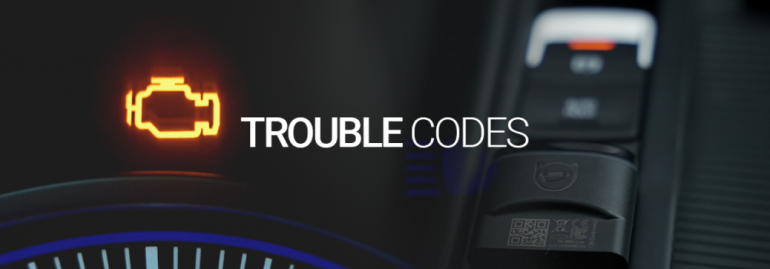
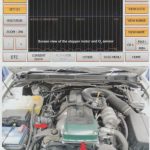
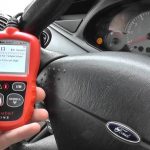
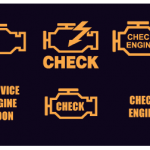
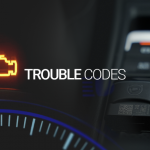
Battery Amp light flashes three times then flashes four times.